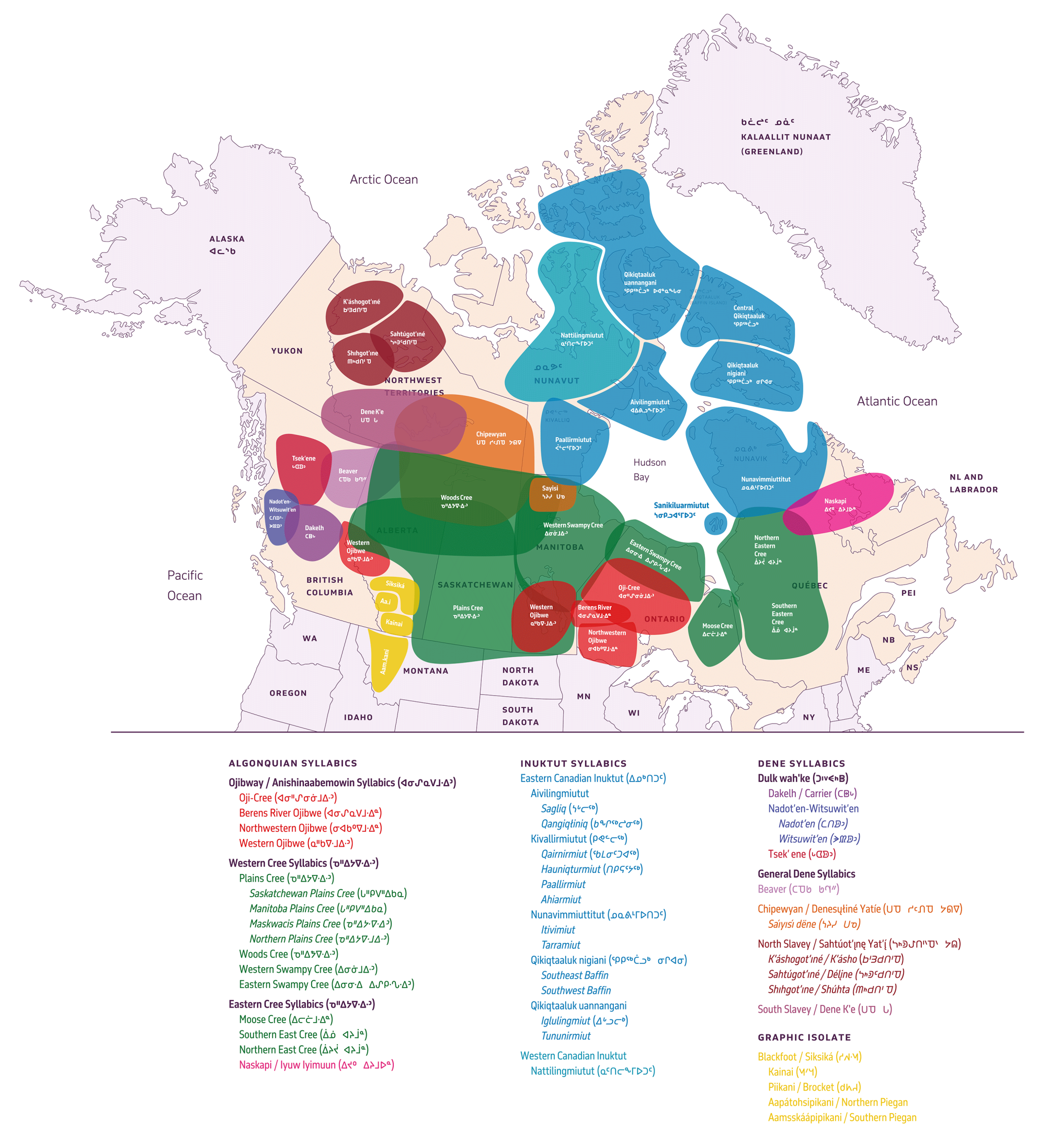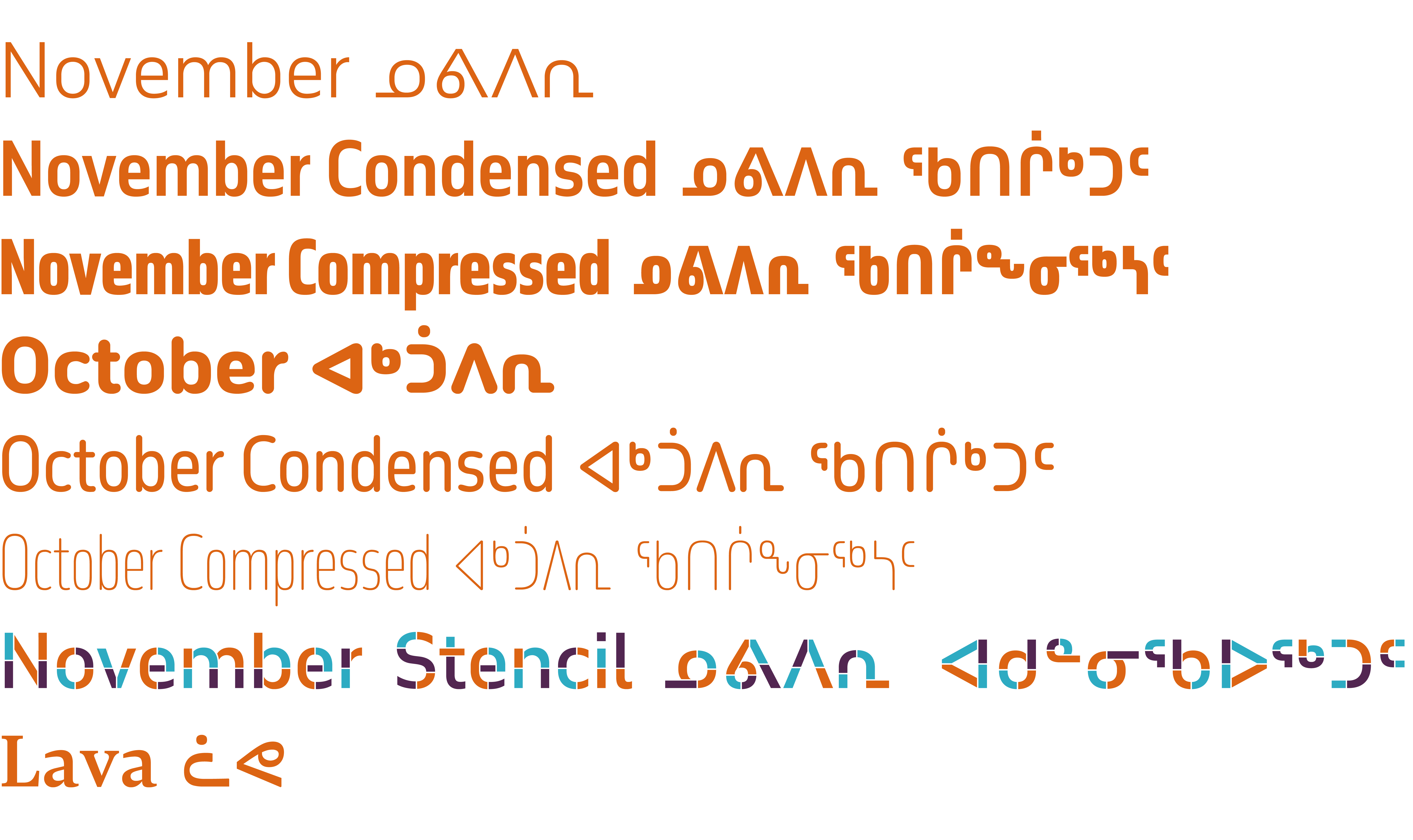To help more people make quality typography, the digital typefoundry Typotheque has released a series of fonts covering Canadian Syllabics, supporting Indigenous language revitalisation and preservation efforts in North America. This series results from a two-year collaboration with Indigenous communities. As part of the project, improvements were contributed to existing encoding standards, making digital text available for peoples previously overlooked. The fonts also offer greater typographic versatility than the marketplace had provided the Canadian Syllabics with to date.
Typotheque’s website reports that ‘after rigorous research and collaboration with Nattilik and Carrier communities in Canada, we have successfully submitted two proposals to Unicode, the international encoding standard for different languages and scripts. The first proposal was to add missing code points to Unicode, with the second being corrections to the representative glyphs for the Carrier Syllabics in Unified Canadian Aboriginal Syllabics code charts.’ The Unified Canadian Aboriginal Syllabics Unicode block covers the syllabic characters needed to write Blackfoot, the Canadian Athabascan languages, Carrier, Cree, Inuktitut, and Ojibwe. The Unified Canadian Aboriginal Syllabics Extended block includes additions covering some Cree dialects, Dene, and Ojibwe.

This map highlights the geographic areas where particular Indigenous languages are spoken.
For a long time now, Typotheque has expanded the language and script support it offers customers. In this project, it commissioned Canadian designer Kevin King. According to Typotheque, ‘Kevin identified that the Nattilik community in Nunavut, the northernmost territory of Canada, was missing 12 syllabic characters from the Unicode Standard, which means that the Nattilingmiutut text could not be written down. Kevin worked with Nilaulaaq, Janet Tamalik, Attima and Elisabeth Hadlari, and elders of the Nattilik community to prepare a Unicode proposal to encode the missing characters. Only after the acceptance of the proposal by the Unicode Technical Committee could fully functional fonts for the Canadian Syllabics be designed.’ On his own website, King writes that ‘in addition to successfully adding the missing Natiilik characters, our proposal also added four historical syllabics used by several dialects of Nêhiyawêwin (Cree) and Anishinaabemowin (Ojibwe) for an sp-series. Although this series is no longer used by these communities, the presence of these characters in Unicode allows for historical texts in these languages to be accurately digitized and preserved.’ Speakers of those languages now have improved support for reading and writing digitally-encoded text.
Typotheque’s release covers eight Syllabic typeface families. These include Lava, a serif style, plus November, November Condensed, and November Compressed, which are all sans serifs. October, October Condensed, and October Compressed are rounded fonts. November Stencil is a stencil font. All of the families support the full Unicode 14 character support. In the Lava typeface, Kevin King developed a secondary style for the Canadian Syllabics. In the Latin script used to write English, the typical ‘secondary’ style has been italics, which have been combined with upright typefaces like the one you are reading now since the sixteenth century. As King asks in this article, ‘in some scripts, the unique typographic culture and history means that a secondary style has never evolved. In such cases, it has often been possible to develop suitable secondary styles that draw on the script’s manuscript and writing culture, with the results being accepted and embraced by its readership. But what if the script in question does not have a manuscript culture to draw upon in terms of stylistic reference points?’ Typotheque shows us its answer in Lava Syllabic, which even has a PDF presentation charting its design.

Overview of the nine typeface families comprising Typotheque’s Syllabic Project.

